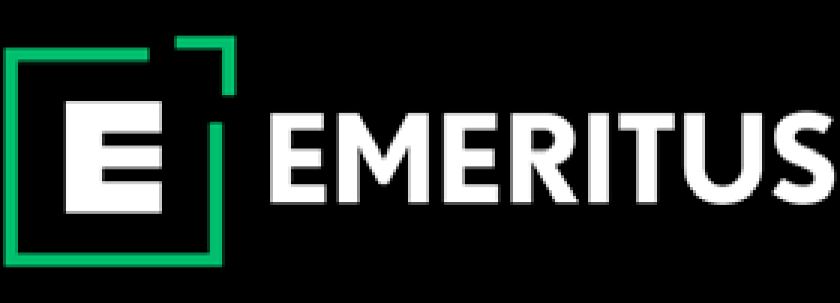Top 4 Evaluation Frameworks: Know All About It

Setting up an advertisement campaign isn’t enough as long as you are not evaluating it. But you can utilize different types of evaluation methods to properly analyze your campaigns. Dig deeper into this article to find out more about different types of evaluation and the four primary things involved in an evaluation framework.
Different Types of Evaluation
The different types of evaluation methods are as follows:
Formative Evaluation
Formative evaluation generates data according to program needs and formulates the baseline for monitoring. It provided insights about areas of improvement, along with helping you understand what you need to prioritize inside the program.
Process Evaluation
Process evaluation takes place after program evaluation. It measures the effectiveness of program procedures. The data generated by process evaluation is useful for spotting inefficiencies and regularizing programs. It also provides insights about a program’s status to external parties.
Outcome Evaluation
Typically, outcome evaluation or object-based evaluation is used during program implementation. It helps with generating data related to program outcomes along with determining to what extent the outcomes are related to the program. It measures the effectiveness of your program and can make it more valuable in terms of intended benefits.
Digital Marketing Courses
Economic Evaluation
Economic evaluation is used during the implementation of the program and focuses on measuring program benefits against costs. Economic evaluation offers quantitative data that is necessary to determine a program’s efficiency. The data is quite similar to the audit and offers insights to backers and sponsors.
Impact Evaluation
It revolves around studying a program from the beginning till the end. It offers quantified results related to the success of a program. Impact evaluation is about studying long-term impacts and measures sustained changes brought about by the program.
Summative Evaluation
It occurs at the end of a program cycle and generates data about delivered benefits. Program administrators often use data from summative evaluation to offer justification regarding a project. It is also used to reveal what a project has achieved.
Goals-Based Evaluation
Goals-based evaluation usually takes place toward the end of a program. Goals-based evaluation is often about measuring the progress toward the SMART objectives of a program. The evaluation is valuable for creating detailed reports for program backers and administrators. Goals-based evaluation usually reveals what was agreed upon at the beginning of any program.
Evaluation Framework
The four components of an evaluation framework are as follows:
Evaluating the Success of Any Campaign
Most people focus on the KPIs while evaluating the success of any campaign. However, evaluating the success of a campaign comes from understanding its objectives. If you are unable to find distinct objectives of a campaign, you can focus on the KPIs associated with different campaign objectives.
For instance, impressions are the most prominent KPIs while evaluating an awareness campaign. The number of leads generated and the number of conversions are important KPIs in the case of a conversion campaign.
ROI and ROAS
ROI (Return on Investment) and ROAS (Return on Ad Spend) are crucial parts of the evaluation framework. ROI focuses on investments and the returns obtained from them. ROI is a chosen metric in everyday life as well as in businesses and marketing.
But ROAS is a more targeted metric. It primarily focuses on the returns from specific ad campaigns. When you divide the total revenue of an ad campaign by its total cost, you get the ROAS.
Evaluation Metrics
An evaluation framework requires you to understand several metrics. Some popular metrics include inside evaluation frameworks are as follows:
No. of Clicks
The number of clicks gives insights into the number of times people have clicked on your ads. The metric is all about understanding the reach of your ads.
CTR
The clickthrough rate is calculated on the basis of the time your ad is shown and the number of clicks it has received. The number of clicks is divided by the impressions. A high CTR indicates that people are finding your ads relevant.
Quality Score
The quality score helps you understand how well your ad is compared to other advertisers in terms of quality. The expected clickthrough rate, landing page experience, and ad relevance influence the quality score. The quality score is evaluated on a scale of 1 to 10.
Ad Frequency
Ad frequency refers to the number of times an advertisement is displayed to a specific user. The ad frequency can be calculated by dividing the impressions of an ad by its reach. The metric is valuable for understanding how many times your target audience is viewing your ads on average.
CPM, CPC, CPA
The CPM model is based on the cost covered by an advertiser for every thousand clicks and views. Suppose the CPM of a campaign is $20. Therefore, the cost of 5,000 views or clicks will be $100. CPM campaigns are more effective when the target audience is properly segmented.
The CPC model requires a company to pay for each user’s click on an advertisement. Suppose the cost per click of a campaign is $5. Therefore, the advertiser will have to pay $500 when 100 users click on the ad.
You can set a specific budget for your CPC campaigns. Setting a budget will ensure that your ad will no longer be shown when it reaches a particular number of clicks. CPC campaigns require you to pay for the impressions that have generated enough interest to follow the link.
The CPA model requires an advertiser to pay when users watch an advertisement, click on it, and perform the required action. The action is a purchase in most cases. But it can also require a user to register online as it increases the database of potential clients.
The concept of CPA is quite similar to that of affiliate marketing. The sites that recommend a product or service cut a commission for each referred sale via outbound links. The links can be subtle recommendations or full-fledged advertisements. But the benefit of the CPA model is that advertisers pay only when they make a profit.
Unit Economics
The unit economics revolve around CAC and LTV. You need to consider all sales and marketing costs while calculating the CAC. The ratio between CAC and LTV reveals the marginal efficiency of a business.
It provides insight into the earnings of the company for every dollar spent. The appropriate CAC: LTV ratio is 1:3. However, your business model largely influences the CAC: LTV ratio.
Ending Note
The proper evaluation framework is necessary for gathering detailed insights about the performance of an ad campaign. You must determine the specific needs of the campaign to choose the right evaluation framework.





